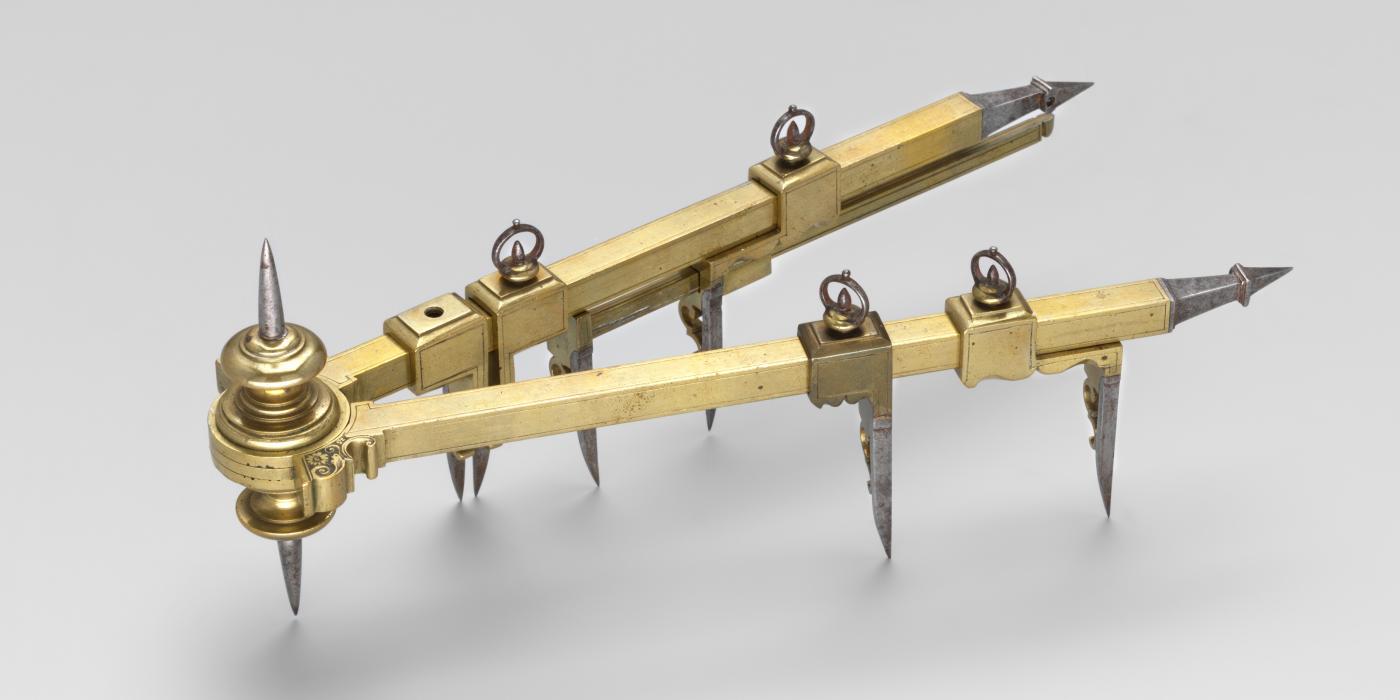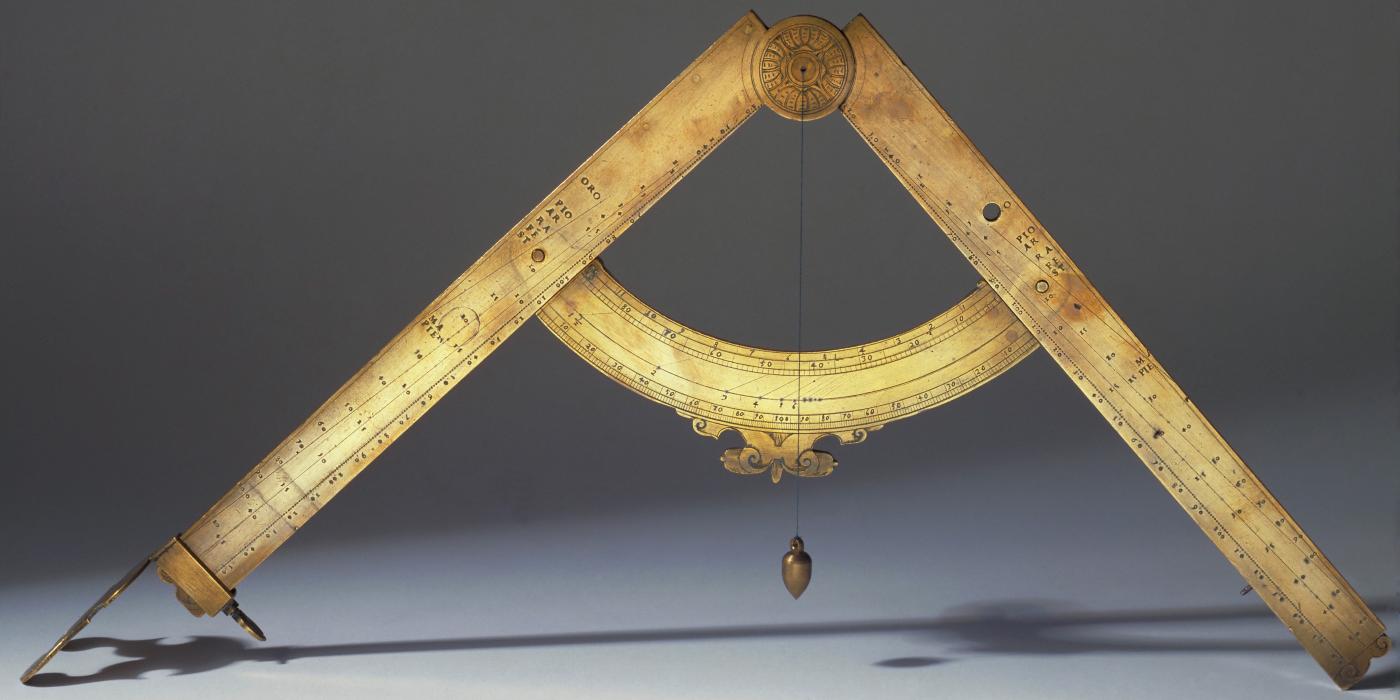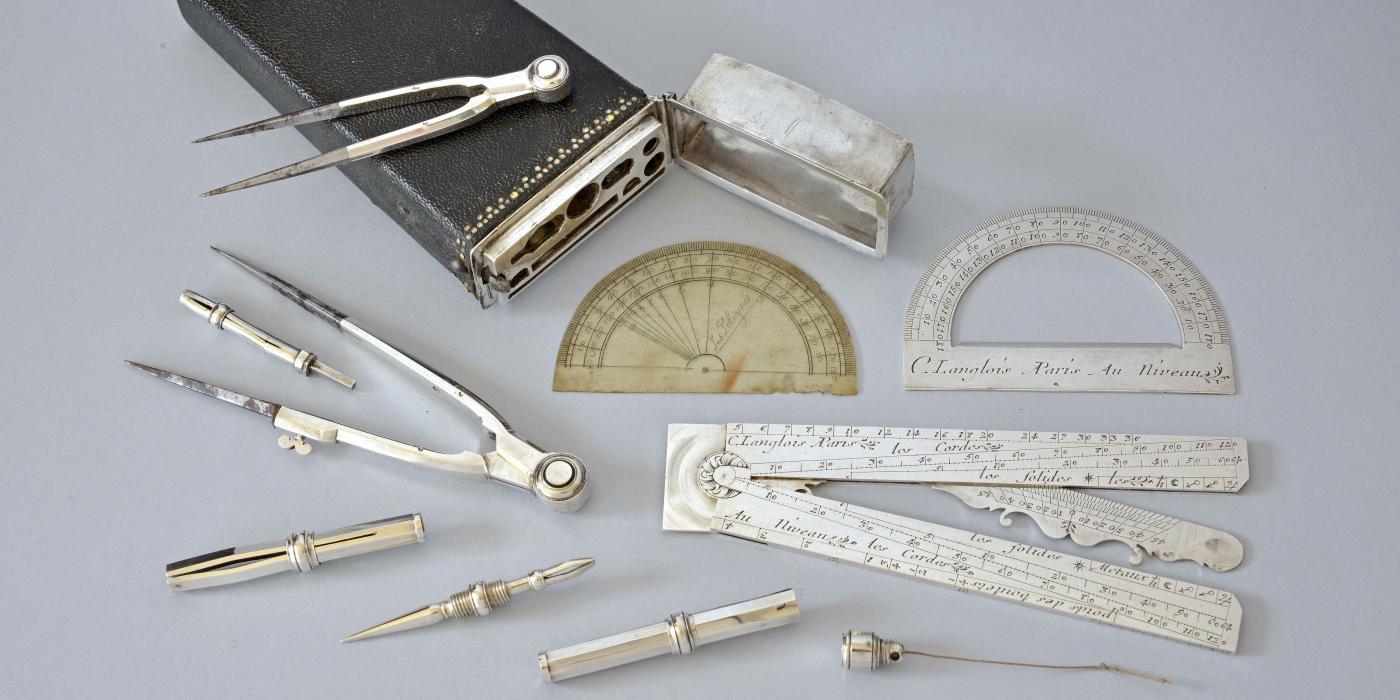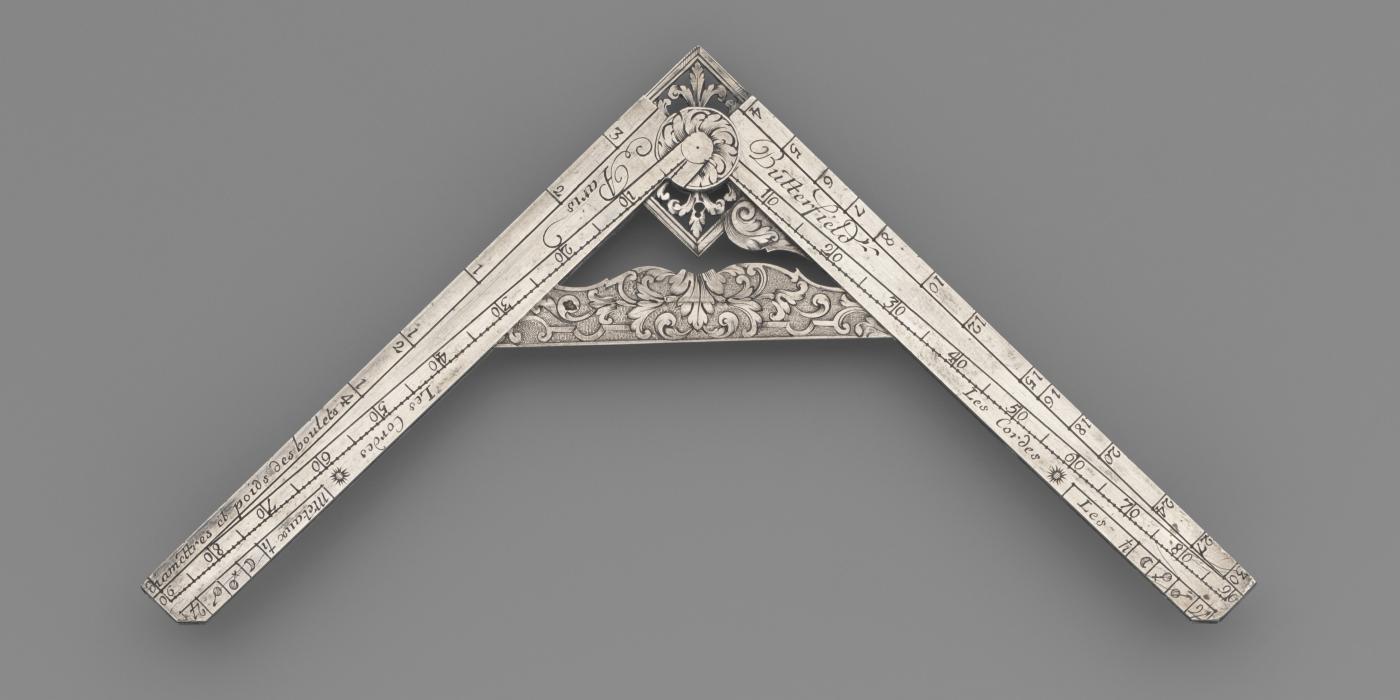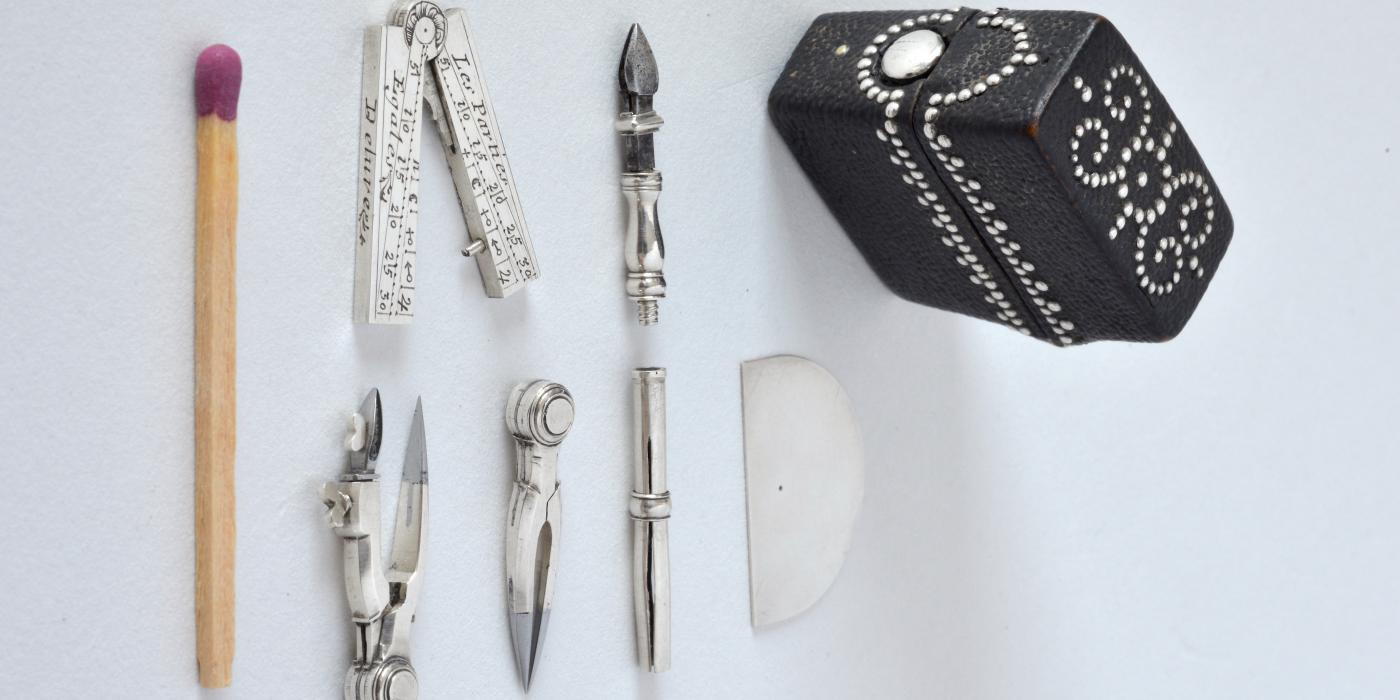Circinus. Proportional compasses from the 15th to the 18th century
On display there are hundreds of original instruments, which tell the history of the proportional compass, a simple calculation tool which stands as one of the most significant achievements of Western practical mathematics and an indispensable companion for architects, engineers, and scientists for over two centuries.
The exhibition illustrates the compass’s evolution, functioning, and many uses, above all the fundamental role it played in the development of applied mathematics, inviting visitors to deepen their knowledge of this extraordinary tool.
The historic pieces on display come from the Bonn Arithmeum, the Hessen Kassel Heritage, the Rocca Collection in Bonn, the Delalande Collection in Paris, the Fondazione Pisa, and the Museo Galileo itself, on view alongside both original and facsimile volumes and reconstructions of proportional compasses, including several conceived by Leonardo da Vinci.
You can also admire two examples of Galileo Galilei's geometric and military compass; several “mathematical chests” – boxes containing compasses and other mathematical instruments – including the large “explorer's chest” built in the mid-18th century by Jacques Canivet, containing 160 mathematical and drawing instruments in silver, steel, brass, ivory, glass and wood; a rare compass by Fabrizio Mordente from the end of the 16th century.
And then many curious objects, such as a miniature mathematical necessaire from the second half of the 17th century, containing six instruments, including a tiny proportional compass just 2.7 cm long.
The exhibition illustrates the compass’s evolution, functioning, and many uses, above all the fundamental role it played in the development of applied mathematics, inviting visitors to deepen their knowledge of this extraordinary tool.
The historic pieces on display come from the Bonn Arithmeum, the Hessen Kassel Heritage, the Rocca Collection in Bonn, the Delalande Collection in Paris, the Fondazione Pisa, and the Museo Galileo itself, on view alongside both original and facsimile volumes and reconstructions of proportional compasses, including several conceived by Leonardo da Vinci.
You can also admire two examples of Galileo Galilei's geometric and military compass; several “mathematical chests” – boxes containing compasses and other mathematical instruments – including the large “explorer's chest” built in the mid-18th century by Jacques Canivet, containing 160 mathematical and drawing instruments in silver, steel, brass, ivory, glass and wood; a rare compass by Fabrizio Mordente from the end of the 16th century.
And then many curious objects, such as a miniature mathematical necessaire from the second half of the 17th century, containing six instruments, including a tiny proportional compass just 2.7 cm long.
Access notes:
Direct access from the ticket office and entry into the first available visit slot.
Last admission half hour before closing.
Photo gallery
